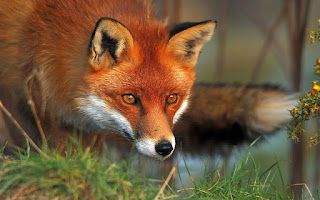 This week, I am focused on organizational politics. I have had multiple conversations over the last few weeks with people who have made comments like, "My performance should speak for itself." Or "I don't see why I should have to 'sell' the work that my department does." They didn't want to "play the game" of organizational politics. I want to share a model that has helped me, and hopefully the individuals I shared it with, to look at organizational politics through a different lens.
This week, I am focused on organizational politics. I have had multiple conversations over the last few weeks with people who have made comments like, "My performance should speak for itself." Or "I don't see why I should have to 'sell' the work that my department does." They didn't want to "play the game" of organizational politics. I want to share a model that has helped me, and hopefully the individuals I shared it with, to look at organizational politics through a different lens.I learned the "foxy-donkey" model while in the UK. Simon Baddeley and Kim James outlined the model in a 1987 article in Management Education and Development. The model includes two dimensions, reading and carrying.
The 'reading' dimension is how you understand your external world, including your ability to read various characteristics of an organization: its decision processes; its overt and covert agendas; the location and bases of power inside and outside the organization; and the organizational culture and its style. It also includes the ability to read one's own power bases and abilities to exercise influence. The scale for this dimension moves from political unawareness at one end to political awareness at the other.
The other dimension focuses on integrity at one end of the spectrum and psychological game-playing at the other end, characterized by self-centered behavior.
When you combine these two dimensions, you end up with four types:
- Owls: individuals who demonstrate wise behavior because they are politically aware while maintaining integrity
- Sheep: individuals who demonstrate innocent behavior because they operate with integrity but are politically unaware
- Foxes: individuals who demonstrate clever behavior because they are politically aware but are self-centered
- Donkeys: individuals who demonstrate inept behavior because they are self-centered and politically unaware
- What are the sources of your political power today? Knowledge? Relationships? Position?
- How are decisions made in your organization?
- What are the overt and covert agendas of individuals in your organization?
- Who has power inside and outside of your organization? What are the sources of their power? Knowledge? Relationships? Position?
- How would you describe your organization's culture and style?
I would love to hear your thoughts on this model. Please contact me via LinkedIn or at susansalomone[at]susansalomone[dot]com.
